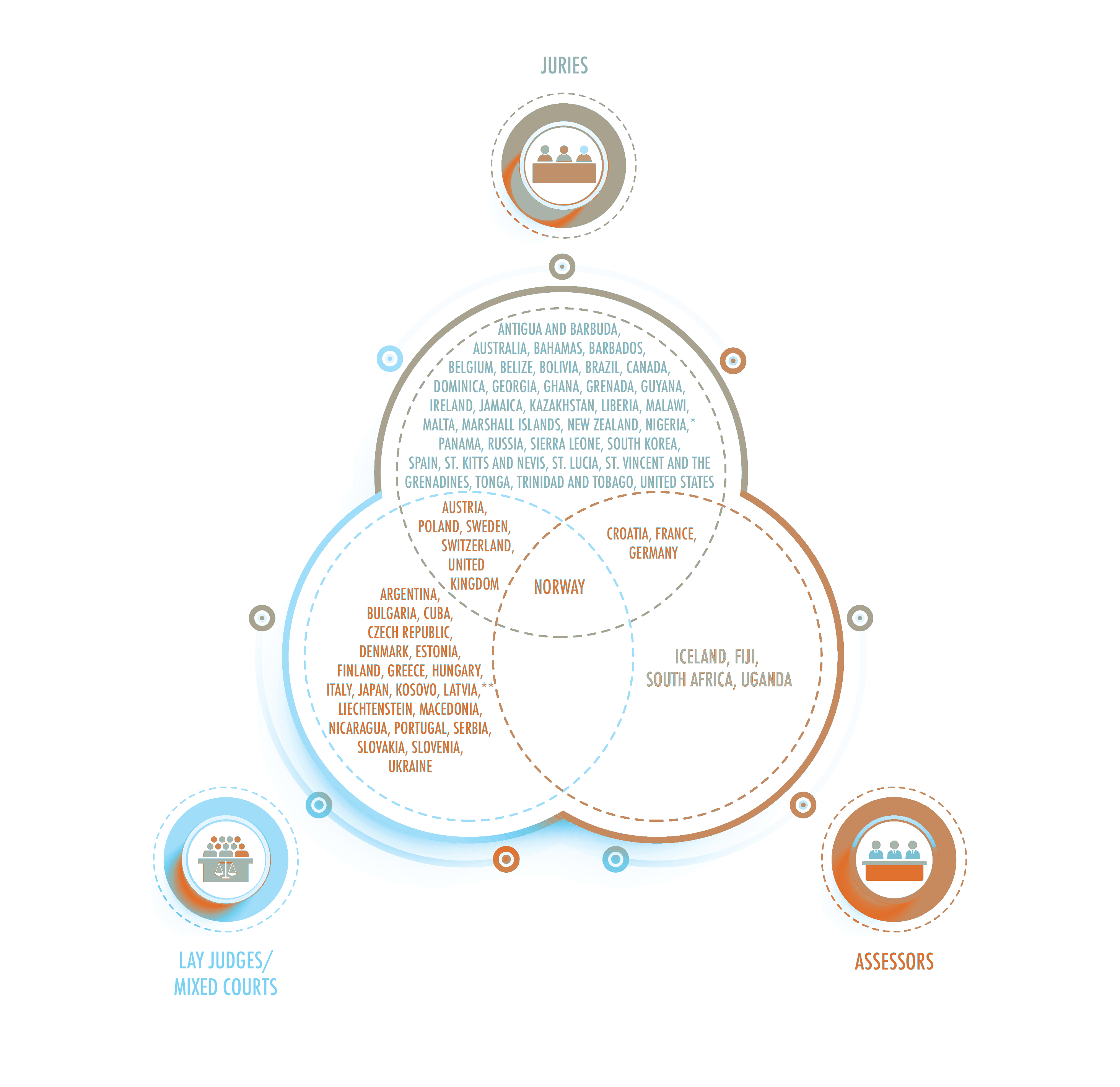The modes of lay participation in criminal trials are as diverse as the legal systems that include them. Few countries can be said to have identical models, and structures can differ within a single country. For example, in many of the countries listed, lay participation may be limited to serious criminal matters, with judges acting alone in other cases. In some countries, like Switzerland, these features only appear in certain regions of the country. The graphic on the right shows only broad trends in lay participation and so limits itself to four types of participation.

Juries
The traditional model, consisting of a panel of laypeople that renders its decision without input from professional judges. Juries tend to be convened for a single matter. In many countries, juries are only available for serious charges like treason or those that could result in a multi-year prison sentence.

Lay Judges & Mixed Courts
Groups of laypeople acting with a professional judge or judges to render decisions. Also called a mixed tribunal, mixed bench, or mixed panel. Sometimes the lay members are designated as lay judges; other times they may be designated to be representatives of the community.
Groups can be small (e.g., two lay judges sitting with one professional judge) or large (e.g., nine laypeople sitting with three professional judges). Sometimes the lay judges are junior to a presiding professional judge who acts as the final decisionmaker, and other times they have the same decision-making authority as the professional judges. In some countries, laypeople will participate in a single trial; in others, they have a more expanded role. For instance, they may be appointed or elected as lay judges for months or even years, and may preside over multiple cases or at different levels of review, such as appeals. They may even receive a salary.
Some countries refer to their lay judges as assessors; where the difference is merely one of vocabulary, not content, those countries are listed in this category, instead of under in the assessors category.

Assessors
Laypeople with specific experience (such as scientists or businesspeople) who aid in decision-making. The difference between assessors and lay judges is that generally their opinions are not binding on the presiding judge, and they have no independent decisional authority. Unlike expert witnesses, however, they usually attend the entire proceeding, rather than a specific section, and they advise judges more directly on findings.

